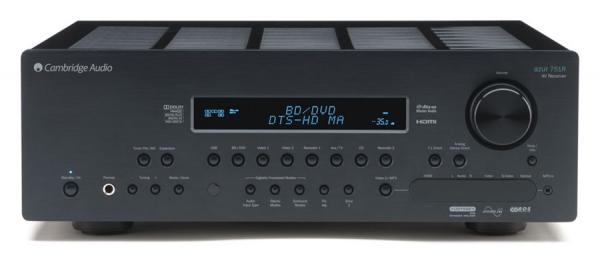Test Report: Cambridge Audio Azur 751R A/V receiver

British hi-fi used to be quirky. Anyone who remembers, say, Connoisseur turntables, Leak amps, or Quad speakers will know what I mean. Today’s Brit-fi, however — at least as exemplified by Cambridge Audio — has successfully transitioned from quirky to distinctive.
Take Cambridge’s new marquee A/V receiver, the Azur 751R. Although it’s assembled in China (like most large-production technology items today), the 751R was British-engineered at Cambridge’s London design studio. And while not particularly eccentric, the Azur’s design is British enough to eschew almost entirely the standard-issue feature-creep that burdens most A/V receivers, for one that is clean, simple, and reasonably compact.
Setup
A/V receiver installation in the HDMI era is a fairly generic task: Connect the cables, the speakers, and the auto-calibration mike and you’re pretty much there. (I still hook up a sampling of composite-, component-, and S-video links to check any video-processing features. Unlike many other receivers today, the 751R includes all three.)
The 751R was no exception. Its auto-setup and equalization features come in the form of Audyssey 2EQ, a simplified system engineered for less-powerful audio-DSP chips. Audyssey 2EQ takes data from only three calibration-mike positions (as opposed to MultEQ’s eight), applies lower-resolution filtering to full-range channels, and does not perform filtering to the subwoofer channel at all. I’m a bit surprised Cambridge didn’t spring for the substantially more capable Audyssey MultEQ found on many a price-competing and even far cheaper model, but everybody’s gotta save somewhere. (The 751R does incorporate Audyssey Dynamic Volume and Dynamic EQ features.)
Attentive readers may notice that, at least on paper, the 751R looks quite similar to the Cambridge Audio Azur 551R we reviewed last year. It is, with a couple of significant distinctions. The 751R specifies twice the amplifier power (120 watts, 7 channels driven, vs. the 551R’s 60 watts); more importantly, it adds vast audio-DSP horsepower, with no fewer than five large-scale chips from Cirrus and TI. Three of these are dedicated to A/D conversion and to upsampling all audio to 192 kHz/24-bit status, using technology from Swiss firm Anagram Technologies via a high-zoot interpolative filter that Cambridge claims enhances resolution and eliminates timing jitter.
- Log in or register to post comments






























































